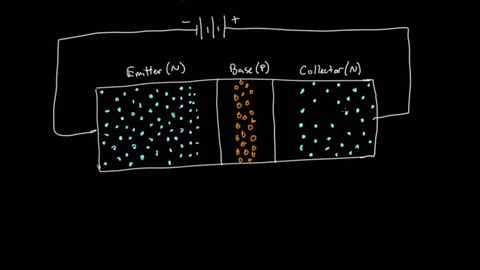トランジスタの仕組み (How a transistor works)
林宜悉 が 2021 年 01 月 14 日 に投稿  この条件に一致する単語はありません
この条件に一致する単語はありませんUS /səˈner.i.oʊ/
・
UK /sɪˈnɑː.ri.əʊ/
- n. (c./u.)集まり;仲間
- v.t.まとまる
- v.t./i.束ねられる
US /məˈtɪriəl/
・
UK /məˈtɪəriəl/
- n. (c./u.)衣料;原材料;原料
- adj.関連な,重要な;世俗的な : 物質的な : 物質でできた
US /ɪgˈzædʒəreɪt/
・
UK /ɪgˈzædʒəreɪt/
エネルギーを使用
すべての単語を解除
発音・解説・フィルター機能を解除

